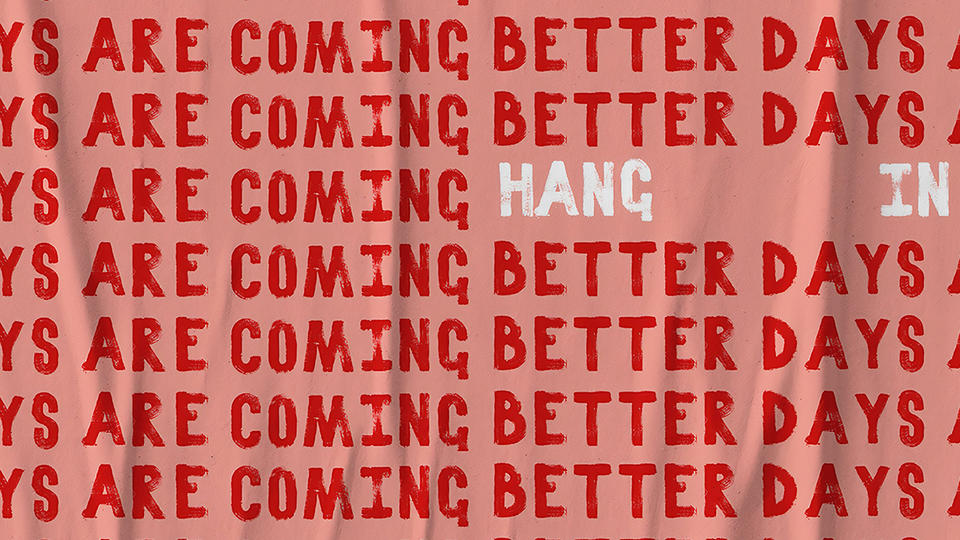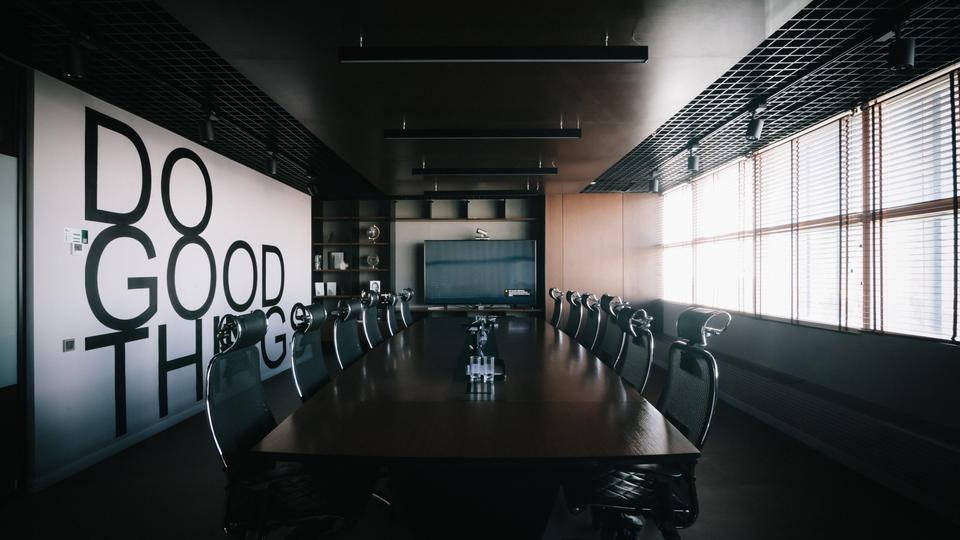Apple's poor sales in China spurs global instability
The falling iPhone sales amid an ongoing trade war between Beijing and Washington have sparked concerns about the cooling of China’s economy.
Rice U. expert available to comment on release of accused priests’ names
In recent months, dozens of Catholic bishops have decided to take action by releasing lists of the priests in their dioceses who were credibly accused of child abuse. Releasing the names is a small step in the right direction, in particular relating to healing relations with parishioners, according to a reputation management expert at Rice University’s Jones Graduate School of Business.
In recent months, dozens of Catholic bishops have decided to take action by releasing lists of the priests in their dioceses who were credibly accused of child abuse. Releasing the names is a small step in the right direction, in particular relating to healing relations with parishioners, according to a reputation management expert at Rice University’s Jones Graduate School of Business.
Anastasiya (Annie) Zavyalova, assistant professor of strategic management at Rice Business, is available to discuss Catholic dioceses’ crisis and reputation management with the media.
Zavyalova’s recent research includes an in-progress study of how parishioners reacted to the names of priests released by the Archdiocese of Philadelphia in 2005.
“Organizational consequences of scandals may be shaped by which units within the organization employed the transgressors, the geographic proximity of a focal unit to those associated units, and whether members engage with the organization through ceremonies or rituals,” said Zavyalova, whose general research focuses on negative events in organizations and the role of the media and organizational identification for stakeholder support following such incidents.
To schedule an interview with Zavyalova, contact Jeff Falk, associate director of national media relations at Rice, at jfalk@rice.edu or 713-348-6775.
Rice University has a VideoLink ReadyCam TV interview studio. ReadyCam is capable of transmitting broadcast-quality standard-definition and high-definition video directly to all news media organizations around the world 24/7.
Follow the Jones Graduate School of Business on Twitter @Rice_Biz.
Follow Rice News and Media Relations on Twitter @RiceUNews.
Related materials:
Zavyalova bio: http://business.rice.edu/person/anastasiya-zavyalova
Jones Graduate School of Business: http://business.rice.edu
Anger Management
Is it worthwhile to blow a gasket during a negotiation?


Based on research by Hajo Adam (former Rice Business professor) and Jeanne M. Brett
Is It Worthwhile To Blow A Gasket?
- Getting mad to get your way only works in limited contexts.
- In balanced situations, such as sales negotiations, acting out angrily can lead to big concessions.
- In more competitive or cooperative situations, however, showing anger can destroy the negotiation altogether.
You desperately want to make a deal. Will it help you to bellow like an angry elephant? Scientists used to think the answer was yes. Displaying anger, they believed, could gain concessions in making a deal. Recent research into negotiations, however, shows that angry outbursts are more likely to shut the deal-making process down — and even prompt retribution.
In a paper, former Rice Business professor Hajo Adam partnered with Jeanne M. Brett from the Kellogg School of Management to show that anger can provide a tactical advantage, but only in specific contexts.
According to past research, in negotiations — when a participant aims for any advantage over the opponent — displaying anger sometimes led to better outcomes. Adam’s new experiments demonstrate that, more often than not, the opposite is true. When a negotiation is highly charged and fiercely competitive, angry outbursts are more likely to spark so much hostility that the infuriated counterpart may actually seek revenge. In these cases, sharp words, rising voices and insults actually reduce the chances of getting to yes.
Adam’s findings align with research on the psychological idea of “competitive arousal.” In highly competitive situations, according to this concept, strategic considerations fade in the heat of strong negative emotional reactions, igniting the need to win at all costs. A study of mediated disputes on eBay, for instance, revealed that negotiators who got angry merely elicited anger from other bidders, reducing the odds of a settlement.
Anger also proved ineffective in cooperative negotiations, when participants negotiate amicably and try to build value together. Take, for example, a disagreement between partners starting a business. In a two-person, virtual teamwork environment, researchers found, subjects who blew their stacks increased interpersonal aggression and drove team performance downward. Subjects who maintained a steely composure were more likely to get a successful outcome.
To test when angry outbursts did and didn’t work, Adam and Brett looked at a mix of negotiating scenarios via computer-mediated experiments.
In one experiment, subjects had $12,000 to hire an IT company to update a website to the latest technical standards. But the best service provider’s bid was $15,000. Participants had to negotiate for a lower price with a counterpart who was either angry or emotionally neutral.
A third of the participants were told that the negotiation should be approached in a competitive spirit; another third were told that it should be approached in a cooperative spirit and the last third were not given any advice. The results offered initial evidence that expressing anger was less effective at scoring concessions in competitive and cooperative negotiations, compared to negotiations where the two factors were balanced.
In a second experiment, Adam and Brett asked 198 participants to negotiate a situation between a chef and an entrepreneur. Again, the negotiation was framed as either competitive, cooperative or balanced. In the competitive situation, the chef and entrepreneur were trying to settle a dispute; in the cooperative condition, they were trying to start a catering business together; in the balanced condition, the chef was attempting to sell the catering business to the entrepreneur.
Once again, getting angry elicited larger concessions in a balanced negotiation context, but backfired in cooperative and competitive contexts. Taken together, these studies suggest that fiery negotiation styles only work in limited circumstances.
But the flames of anger aren’t easy to modulate in the heat of the moment. Instead of assuming that angry outbursts are a viable tactic and then trying to identify the moments when they won’t work, Adam suggested, it probably makes more sense to assume anger isn’t a particularly effective negotiation tactic — and then identify the rare situations when it may work.
In part, this is because it can be so hard to judge how a negotiating partner views the interaction. A conversation that one negotiator may see as clearly cooperative, competitive, or balanced may be characterized entirely differently by the person on the other side of the table. As in the Indian parable of the blind men touching an elephant, everyone comes with their own emotional history, temperament and background, which all but guarantees they will each perceive a different animal. The only certainty, Adam said, is that it’s likely a mistake to poke it with a pointy stick.
Hajo Adam is a former assistant professor of management at Jones Graduate School of Business at Rice University.
To learn more, see Adam, Hajo and Brett, Jeanne M. (2016). Context matters: The social effects of anger in cooperative, balanced, and competitive negotiation situations. Journal of Experimental Social Psychology 61, 44-58.
Never Miss A Story
Keep Exploring
Playing The Long Game
Why President George H. W. Bush went to bat for NAFTA.


By Peter Rodriguez
Why President George H. W. Bush Went To Bat For NAFTA
A version of this op-ed originally appeared in the Houston Chronicle as "Bush played the long game with NAFTA"
Whenever dozens of heads of state gather, it’s a safe bet they’ll be photographed at ornate desks where politically valuable deals are signed. The G20 Summit held in Buenos Aires on December 2, 2018 framed just such a moment as President Donald Trump, Canadian Prime Minister Justin Trudeau and outgoing Mexican President Enrique Peña Nieto sat side by side to sign a new trilateral trade agreement among their countries. But it would be misleading to call this trade deal truly new. The three countries first signed such a deal under former President George H.W. Bush more than 25 years ago. While the latest trade deal makes some valuable improvements to the existing agreement, it is new only in the sense that a longstanding house is new after a kitchen renovation.
For Houston, the North American Free Trade Agreement transformed the city into a new U.S. center of global trade. For the three participant countries, it fundamentally changed commerce among their economies. And for Americans now remembering the former president, it was a critical moment when a U.S. leader made a difficult, highly controversial decision for the country’s long-term strategy.
In knitting together the economies of North America, Bush culminated an ambitious global vision. Lowering trade barriers among countries would integrate the continent, foster competition and, eventually, build supply chains that could compete with other regions and emerging economic giants around the globe.
Then, as now, free trade was a hard sell politically, requiring a deep commitment to the principles of openness, competition and economic alliances. For all the economic opportunity it would create, Bush surely knew, NAFTA would also result in job churn, losses and gains unequally and sometimes painfully apportioned across the economy.
In standing up for NAFTA in an election year, Bush had to spend precious political capital. It made him vulnerable to many opponents, including the spirited anti-NAFTA Texan H. Ross Perot, and may have drawn enough ire to cost him a second term.
Nevertheless, NAFTA’s signing was not a first, but a final, act for an era of economic opening. The deal was the natural extension of the Reagan-Bush view on global commerce and the United States’ role within it. At the height of ‘Japanaphobia’ in 1986, Reagan opened the Uruguay Trade Round of the GATT (Global Agreement on Tariffs and Trade) negotiations, leading to the creation of the World Trade Organization. Two years later, Reagan signed the US-Canada Free Trade Agreement, the essential precursor to NAFTA — and the most significant U.S. step toward open trade in forty years.
A year after Bush signed the agreement, and after making alterations that addressed labor and environmental concerns, President Bill Clinton signed NAFTA into law on Dec. 8, 1993.
And then: nothing happened.
Or rather, nothing much happened quickly because, despite the sometimes-hyperbolic rhetoric of trade, reorganizing industries and economies takes time. Building new plants takes time, moving workers and relocating firms takes time, growing ports, roads and airports takes time. Certainly, dropping tariffs has some notable immediate effects for commodities and some finished goods, but the real impact of a sweeping trilateral trade deal eases in slowly. In the process, new trade hubs and centers are built, and cities are transformed, none more so than post-NAFTA Houston.
Houston was a global city before NAFTA owing to its oil, gas and petrochemicals industries, and because of the Port of Houston. But in the 1990s, trade exploded in ways that humbled prior metrics as growth boomed across China, India, and a newly-opened Eastern Europe. Remarkably, Houston kept pace, creating new manufacturing jobs and a mountain of finance and professional services jobs to orchestrate the new trade flowing through North America and across the world.
Today, at the onset of a new, more global era, few people could have envisioned the scale of change in this city. When Bush signed the NAFTA agreement in 1992, Houston’s economy employed 1.8 million people. Today it employs just over 3 million people. NAFTA and the transformation it stoked supported Houston’s growth, perhaps easiest to see at the Port of Houston, which is now the nation’s second largest exporter after New York City. For the United States, trade with NAFTA partners has grown to more than three times its level in 1993 at over $1 trillion annually, nearly double the level of our trade with China.
The North American trading bloc, meanwhile, has new and increased relevance as NAFTA buoys each of its three nation’s economies in competition with China.
In his latest book, The Fifth Risk, author Michael Lewis warns that one of our nation’s least appreciated challenges is “the risk a society runs when it falls into the habit of responding to long-term risks with short-term solutions.” Avoiding that risk requires facing tough choices, bold thinking and acting for the future. Whatever history ultimately writes about NAFTA, it is plain that Bush was willing to pay a price for his belief in it — and that he was right about the agreement’s power to grow and transform Houston over the long haul.
Peter Rodriguez is a Professor of Strategic Management and the Dean of the Jones Graduate School of Business at Rice University.
Never Miss A Story
You May Also Like
Keep Exploring
Worth It
How much should a leader get paid?


By Emily Pickrell
How Much Should A Leader Get Paid?
When Mexico City shop assistant Eva Maria Tatemura first heard that her newly elected president planned to cut his salary in half, she felt a spark of hope. Maybe change really was coming to Mexico’s corruption riddled government. After all, as Tatemura, who earns about $200 a month, said, “In Mexico, most citizens think that becoming a politician is a better deal than winning the lottery.”
Mexican president Andrés Manuel López Obrador, who was sworn into office December 1, captured Mexico’s imagination and won a landslide victory by promising to take on corruption and excess. Shortly after being elected, he announced he would take a 60 percent pay cut as president, earning roughly $72,000 a year.
Skeptics, including the country’s political class – many of whom will also see their salaries reined in – question whether the pay cut will benefit Mexicans. A price cut for the president, they warn, could mean a competence cut for the government itself.
The debate launched by López Obrador’s announcement echoes a longstanding one across the border: whether executive pay in the United States is too high. Granted, there are huge differences in the two frames of reference. In Mexico, public officials are some of the highest wage earners, while in the United States, executives in the private sphere are the ones most likely to earn top pay.
Yet on both sides of the border, in both sectors, the fundamental question is the same: What, exactly, should an essential leader be paid? Are high salaries needed to retain top talent, or do they just ensure the hiring of executives who know how to earn them? As it turns out, the answer for Mexican politicians is deeply influenced by the answer in U.S. businesses.
In the United States, one of the first factors in setting executive salary is gauging the competition, said Harry Jones, an attorney with Littler, a human resources legal firm. “In formulating a CEO salary offer, a board of directors for a company will always want the compensation committee to ensure that the pay is commensurate with a peer group,” he said.
The next challenge is putting a price on the extra talent a CEO brings, said David De Angelis, an assistant professor of finance at Rice Business. This benefit, known in compensation lingo as the marginal productivity of talent, can be astonishingly expensive – yet still in the company’s best interest to pay.
“If I am a bit more talented, the small difference in talent will induce a huge change in the productivity,” De Angelis said. “Even if there is a small difference in talent, it may result in a large difference in compensation because the sums are so big.”
To determine if this talent difference has paid for itself, though, companies need to accurately measure the performance of one individual leader. In the U.S. for-profit sector, De Angelis said, this is often done by comparing how a company’s stock price fares against that of its rivals, a metric known as benchmark performance.
But benchmarking fails to explain why compensation has skyrocketed in the U.S. in the last generation. In 2017, for example, the average CEO of an S&P 500 company earned $13.9 million – more than 360 times the salary of an average worker, according to the Economics Policy Institute. The ratio is more than ten times what it was in the late 1970s, when CEOs earned about 30 times what an average worker made, and a 70 percent increase over the stock market in the same time period.
“If you were to pick a country to be a CEO in, it’s America. But if you were to pick a country that has had a top economic performance in the last generation, it would not be the U.S.,” said Jeff Hauser, executive director of the Revolving Door Project at the Center for Economic and Policy Research. “The overall compensation of your top employees in America is radically disproportionate to comparable peer industrial CEOs in other wealthy countries.”
Using compensation committees and boards of directors to determine executive pay is a major flaw in the U.S. formula, human resources attorney Jones said. That’s because boards of directors are typically selected by other executives, who indirectly benefit from this approach. Because boards tend to overlap throughout the corporate world, they rely heavily on a small cadre of compensation firms to formulate pay packages.
“The same consultancies are designing a package that gets used again and again,” Jones said. “And the boards end up interlocking – they know each other to the point where there is a groupthink when it comes to salary.”
The same circular logic has been replicated in Mexico, said Oscar Urgateche, an economics professor at the National Autonomous University in Mexico City. While Mexican politicians don’t receive Wall Street-level salaries, they’re still very highly paid, even in comparison with Mexico’s private sector. Mexican politicians’ salaries are typically double or more those of elected officials in other Latin American countries, ranging from about $200,000 to $300,000 in a nation where the average wage is about $6,000 a year.
But without these high salaries, defenders argue, Mexico’s best leadership talent would go to organizations such as the World Bank or top U.S. companies. Like defenders of top executive salaries in the United States, they say the key factor is scarcity.
“The high-ranking Mexican sector compares itself with the U.S. private sector – that’s why those levels of salaries are possible,” economics professor Ugarteche said. “Their argument has always been that if they don’t earn that much they will go to the U.S.”
But Lopez Obrador, he adds, is right to maintain that candidates for public service should have a more philanthropic focus than a focus on personal compensation. Government employees bent on maximizing their salaries, he argues, may be less qualified for their jobs because their focus on society will be skewed. And according to Urgarteche, a decrease in salary for public officials might actually change the nature of those attracted to serve.
“The current salary justification is a colonialist way of thinking – that only U.S.-elite trained politicians have any value,” Urgarteche said. “My impression is that you will get younger people who are better related to their own country and who want to work in Mexico for the Mexican government. That will produce a closer relationship between citizens and the government.”
Manuel Molano, assistant director of the Mexican Institute for Competitiveness, is more circumspect, arguing that López Obrador should focus on what his government can deliver – and that his and other political salaries should reward competence, not selflessness.
“It is in the interest of the state to pay the bureaucrats handsomely,” Molano said. “If you are paying less than market rates, you are going to get people with less talent. You don’t want the assets of the government in the wrong hands.”
At a time when Mexico’s corruption ranks close to that of Papua New Guinea, however, López Obrador’s reduced salary may be most significant as a down payment on his promise to work for his country’s future and not his own. “In Mexico, a corrupt politician will not only leave office as a millionaire,” Eva Maria Tatemura said from the shop where she works. “He will secure enough wealth to set his family up for the next three generations.”
Never Miss A Story
You May Also Like
Keep Exploring
Picture This
What does our growing ability to document personal life mean for business?


Based on research by G. Anthony Gorry (1941-2018)
What Does Our Growing Ability To Document Personal Life Mean For Business?
- Digital advances make it possible to record minute details of daily happenings.
- When everyone’s life is recorded — and searchable — there are profound implications for businesses.
- Companies are already curating individual employee experiences as learning tools for the entire workforce.
Behind an iron gate, a young Tony Gorry plays in a wading pool with a childhood friend. Wet towels and toys lie on the lawn nearby. His dad tosses a ball into the pool for the boys to catch, as he talks about a new client with his mom. An aunt offers a stick to the family’s aging cocker spaniel, Jack.
This memory comes back — sharp as a high resolution photo — when Gorry, a Rice Business professor, returns to his hometown for his 50th high school reunion. Stopping in front of his boyhood home, he remembers that summer afternoon in the 1940s. Then his cell phone rings.
From more than 1,500 miles away, Gorry writes, “a call flashed through the air to interrupt my reverie. Brusquely, it summoned me back to a life already mediated to a great degree by technology.”
Professor Gorry, who died in October 2018, was a Professor Emeritus who taught computer science and led Rice’s Center for Technology in Teaching and Learning. In a 2016 essay for the journal, Knowledge Management Research & Practice, he elegantly bridged personal memories from his own life with analysis of the way pervasive technology may impact companies’ use of knowledge management.
Our lives are already heavily influenced by technology, Gorry notes. These ever-advancing technologies act as multimedia scrapbooks, or “memory machines.” Embedded digital technology, such as iPhone apps track sleep, FitBits count steps and Siri tells us the number of minutes to routine destinations, while companies can monitor employee movement with webcams, voice recorders and email tracking.
The abundance of data allows organizations to unlock hidden brainpower by sharing one worker’s knowledge with countless others. Companies have already started to do this with digitized instructions manuals and smart devices that link employees to each other and to work processes. To further this ability, companies will continue to blend knowledge management systems with advances in technology.
Such integration can happen fast. In the 2009 book, Total Recall, How the E-Memory Revolution Will Change Everything, Bill Gates postulated that individuals will one day have instant access to all of the information they come across throughout their lives. Just three years later, IBM’s Watson showed its fantastic memory recall and associative powers by beating a person at Jeopardy.
Digital life, in other words, has accelerated the scope and detail of what we can record. As a result, the nature and scope of knowledge management systems in business will change too: New business structures and processes will emerge, alongside new paradigms for the interplay of digital memory machines, human intentions and behavior.
For companies, this means that once-private artifacts of personal experience — documents, scribbled notes, contacts and recorded lunch conversations — can now be curated to establish best practices, create company narratives and to train employees.
Ultimately, big data will transform corporate processes and the way workers interact with one another. But, Gorry notes, there is of course a dark side.
Will coworkers’ lunchtime conversations, topics ranging from business to politics and gossip, be recorded? Will the company then own the personal elements of employees’ conversations? How will concepts of privacy change?
Gorry does not offer anything like a quick snapshot for answer. Instead, with an understatement worth a thousand words, he observes: Interesting times lie ahead for knowledge management.
Tony Gorry was the Friedkin Professor Emeritus of Management at the Jones Graduate School of Business at Rice University.
To learn more, please see: Gorry, Anthony. (2016). Memory machines and the future of knowledge management. Knowledge Management Research & Practice, 14, 55-59.
Never Miss A Story
You May Also Like
Keep Exploring
Rice President David Leebron on President George H.W. Bush
Rice University President David Leebron reflects on the passing of former President George H.W. Bush: “President Bush was a quintessential Houstonian and a remarkable American: generous, hard-working, driven to lead and determined to serve a purpose greater than himself. He was a gentleman whose kindness and decency were fundamental to his extraordinary character."
Rice University President David Leebron reflects on the passing of former President George H.W. Bush:
“President Bush was a quintessential Houstonian and a remarkable American: generous, hard-working, driven to lead and determined to serve a purpose greater than himself. He was a gentleman whose kindness and decency were fundamental to his extraordinary character. He served our country and the world in a unique set of roles: as ambassador to the United Nations, U.S. liaison to China, director of the CIA, vice president and ultimately president of the United States. We will always remember and be grateful for the leadership and service of George H.W. Bush.
“The president and his wife, Barbara, were dear friends of Rice University. It was President Bush who bestowed upon the university its proudest moment on the world’s stage: hosting the G-7 Economic Summit in 1990.
“Students who attended Rice in the late 1970s had the honor of taking classes from the future president at what is now Rice’s Jones Graduate School of Business, where he held the title of adjunct professor of administrative science. A generation later, our graduates of the class of 2000 listened as former President Bush delivered a commencement address in which he reminded students that ‘actions speak louder than words. Words are important, and speaking can be an important part of leading — of rallying the troops. But leading by example, in my mind, is the best way to get things done whether it’s in politics, business, you name it.’
“On behalf of my wife, Y. Ping Sun, and the entire Rice community, I extend our deepest sympathy to the Bush family, including his grandson, George P. Bush, whom we are proud to call an alumnus of the university.”
When Self-Identity Sways the Deal
People who see themselves as independent are less likely to go for friends-and-family promotions.


Based on research by Vikas Mittal, Karen Page Winterich and Vanitha Swaminathan.
Some promotions tempt interdependent people, while others appeal more to independent consumers. When it comes to designing promotional deals, these nuances of self-identity can be the difference between a sale and disinterest.
Key findings:
- Our responses to sales promotions are influenced by our self-identity — either as interdependent members of a community or individuals who want to stand out.
- While a consumer’s decision to take advantage of a sales promotion is mainly a function of whether they see it as a good deal, self-identity also comes into play.
- Friends-and-family promotions work well for people who see themselves as interdependent. But promotions that play up exclusivity are equally successful regardless of how customers identify themselves.
Maybe you have a friends-and-family plan on your phone. Or perhaps you like to take advantage of your birthday discount at Benihana.
Companies want to offer you a promotional deal you can’t resist. But discounts for special customers or friends and family don’t always work. That’s because our buying decisions depend not only on rational cost-benefit analysis, but on our concept of self.
Self-concepts can be interdependent — people who consider themselves deeply connected to a particular social network, such as family, co-workers, or friends. Or it can be independent — people who want to stand out as individuals by focusing on themselves.
Some promotions tempt interdependent people. Others appeal to independent consumers. When it comes to designing promotional deals, these nuances of identity can be the difference between a sale and disinterest.
We all have a bit of both identity types. But three studies involving hundreds of university students by Rice Business marketing professor Vikas Mittal suggest that, regardless of economic incentive, people whose self-concept is more independent are less likely to go for friends-and-family plans, regardless of the savings.
A related set of studies, meanwhile, show that the appeal of feeling special is universal. Mittal and co-researchers Karen Page Winterich at Penn State and Vanitha Swaminathan of the University of Pittsburgh found that promotions based on exclusivity tended to work equally well regardless of whether consumers saw themselves as part of an interdependent tribe or as lone wolves who need to stand out from the pack.
The lesson for consumers? Brands will do all they can to understand the social relationships of consumers they want to reach. So while it make sense for Verizon to have a friends and family plan, in all likelihood, it won’t work for Rolls Royce or Chanel, whose consumers want to stand out.
To be sure, it’s not enough to simply push a product: most people can do the math to determine whether a promotional price is worth it, or sniff out a shoddy product they don’t really want. But self-concept can alter our perceptions of whether or not a deal is good or bad overall.
How should companies evaluate these deals? Some managers argue that promotional rates provide discounts for customers who will flee as soon as the price goes back to normal. Mittal’s research suggests the opposite. When self-identity is part of the consumer’s decision to take advantage of a promotion, he writes, the transaction becomes an opportunity for company and customer to bond – and for the company to cultivate ongoing loyalty.
In the long run, the promotional funds spent on friends-and-family discounts or “you’re special” customer rewards pay off symbolically and monetarily: with warm, exclusive bonds between consumers and the brand that makes them feel understood.
Winterich, K.P., Mittal, V., and Swaminathan, V. (2014). Friends and Family: How In-Group Focused Promotions Can Increase Purchase. Customer Needs and Solutions, 1.4: 333-344.
J. Hugh Liedtke Professor of Marketing
Never Miss A Story
You May Also Like
Keep Exploring
Protect Me
How detaining children hurts the American workers who guard them


By Claudia Kolker
How Detaining Children Hurts The American Workers Who Guard Them
This article originally appeared in the Houston Chronicle as "When we hurt migrants, we hurt Americans"
I was standing in a trailer in South Texas, anxiously sipping from a Styrofoam coffee cup, when the lawyer rushed in. “Can you help?” she said. “There’s a 9-year-old who will not stop crying.”
It was a relief to face a problem I might be able to fix. I had spent that whole week in mid-July in this temporary building, interpreting for detained asylum seekers who had just been reunited with their children.
I’d volunteered there precisely to stop feeling helpless. Under the zero-tolerance immigration policy launched in April, all people who crossed the border without documents — even asylum seekers — were now treated as criminals. When parents went to court, their children were taken from them and placed in shelters.
Five months later, the family separation policy has been suspended, but thousands of children who have crossed the border are still held for long periods in detention centers and tent cities across the country. Though my understanding of asylum law was limited, I knew I wanted to help those kids. Most of all, I wanted to see what was going on for myself.
What I saw at the border was far worse than I imagined, not only because of what these families experienced, but because of what had happened to the American workers guarding them.
I was hardly alone in wanting to help detained kids. The volunteers I worked with that week included Republicans, Democrats and independents; Baptists, Evangelicals, Catholics and Jews; mothers, nuns and young men. Laura, the corporate lawyer for whom I translated, had grabbed a flight from Kansas City. I drove from Houston.
The 60 or so women we met that week had been reunited with their children only days before. All were following the legal procedure to seek asylum, after crossing over from Guatemala, Honduras and El Salvador. For some, our job was preparing them for “credible fear” interviews, the first step in filing an asylum case. A negative outcome from one of these interviews can lead to deportation.
For others — women who had already failed this interview, women without legal counsel and distraught over their missing children — we helped document why they were afraid to go home, with the hope they would get another chance at a hearing.
My first surprise that week, however, was not what our clients were fleeing. It was the brutality in their everyday lives. Every woman I talked to, and every one that my colleagues interviewed, had endured some form of sexual or physical violence at home.
Domestic violence, though, is no longer cause for asylum in most cases. What potentially is: persecution by criminals or government, lack of protection from police, forced labor, oppression for race or political belief. For a woman whose whole village or neighborhood has been strangled by gangs and poverty, though, it can be hard to explain to Americans how these all entwine. In the first interview I did, a Honduran mother tried to explain why she knew police wouldn’t protect her from a violent stalker. It took her awhile to find an example that showed us: Her neighbor in their remote village was murdered along with her children in her house by a gang. The police never showed up to investigate.
It was stories like this that kept me returning to the break room to gulp caffeine. Other interpreters and lawyers were there for the same reason, silently swallowing coffee or chips. It helped to glance up at the wall, covered with crayoned pictures of mermaids and superheroes drawn by detained kids. They reminded me of the sketches with which I used to amuse my own daughters. So when the lawyer came in for help, I thought I know what to do.
But the girl would not stop crying.
Inside a cubicle, her mother sat quietly. This interview was her one chance for help: most detainees get no counsel and have no clue what U.S. asylum criteria might be. But the interview couldn’t start because her daughter leaned face down on the desk, shaking with sobs.
I obviously couldn’t carry out my original plan for distraction: a princess-y portrait of the girl herself. So I decided to sketch the person she loved most in the world, her mother. Sure enough, never once showing her face, the girl slowly began pointing which colors I should use. The lawyer started asking questions.
But when I looked up to draw in the mother’s long hair, she was hiding her face as well. Staring downward, cheeks drenched with tears, she never stopped whispering her answers to the lawyer’s questions.
What if the child resumed crying, now that I had nothing to draw? I started making things up. Around the mom’s half-finished portrait, I drew vines, bluebirds, green trees bursting with roses and grapes. Still facing downward, the girl joined in. “I love you Mami,” she wrote neatly in Spanish. Then, almost miraculously, she began to color. By the time Laura tapped to signal a new case, the girl was sitting up, drawing and smiling intently.
The next interview made my stomach churn all over again. All that week Laura and I had worked with a Salvadoran mother who had seen authorities in her town beat someone nearly to death. This time, she told us what she experienced herself. At the hands of Americans.
Shivering and exhausted after crossing the Rio Grande River, the woman and her small daughter encountered U.S. border agents almost immediately. The officials drove them to the Port Isabel detention center in Brownsville — and the hielera. The icebox. A routine, and controversial, part of the border control process, the hielera is an ice-cold cell with concrete floors where newly apprehended migrants are jammed often for days. Forbidden to huddle for warmth, with no protection except Mylar sheets, the women in the hielera begged border control agents for sweaters.
“They laughed,” the mother told us. “A group of them fanned themselves and said, ‘Whew, it’s hot in here! Let’s turn up the air conditioning.’”
From the hielera, officers transferred the woman to the perrera, the dog kennel. Here, in a cell crammed with dozens of other women, trays of disgusting food such as still-frozen bologna were kicked across the cell floor. She told us that once, after a day with no food at all, a guard opened the door at 3 a.m. and hurled in packs of crackers, as if to animals.
But the mother we were interviewing was too traumatized to eat at all. Within hours of arriving, officials had taken her daughter. “They took me out to go sign papers,” she told us. “They said she’d be there when I got back.” But when she returned to the perrera, her daughter was gone.
That was May 23. The girl would not see her mother until the third week of July, just days before I met them.
Migrating to the United States is a known risk. One in six Latin American women who make the journey are raped. This threat in mind, some mothers even give their girls birth control injections before starting out. But the Salvadoran woman and her daughter had been threatened with murder and had no choice. Other migrants have been driven by poverty so intense that 70 percent of their communities suffer from malnutrition. Most never heard - or imagined - that the United States might separate them from their children.
When the Salvadoran mother was finally reunited with her skinny, soft-spoken daughter, whose favorite recollection of home was going to school, the girl was altered. “Why did you sign me away?” were her first words to her mother. “Why did you give me to a shelter?” U.S. border officials had told her that her mother abandoned her. For two months she had no choice but to believe them.
At late-night dinners all that week, my co-workers described similar stories. One talked to a small boy who said he was told by guards to sign a paper he couldn’t read or have his fingers chopped off. Another interviewed an 8-year-old who watched guards kicking a teenager over and over in the ice box room. Child welfare workers and lawyers have documented thousands of similar reports.
“Why did they treat us like we were not human?” the Salvadoran mother asked. Some guards, she added, were Latino. “Why did they do this to their own people?”
When the interview ended, I ran into the lawyer who asked for help with the crying girl. “Thanks for the help,” the lawyer said tersely. Then she summarized what the girl’s mother had whispered to her. What both had survived, for years, in the house of a gang member before they fled.
“That’s not why the girl was crying,” the lawyer added. “She won’t talk about that even with her mother. She was crying because they were separated when they got here, and she didn’t see her mother again for 52 days. She has been crying nonstop since they were reunited.”
I had fixed precisely nothing, in other words. My absurd attempt at American mom magic merely showed how little I understood what was in front of me.
Leaving for South Texas five days earlier, I had wanted to support due process, and to act on the same empathy that millions of others have felt for children snared in the zero-tolerance policy. What I hadn’t grasped was how many regular Americans were no longer just executing that policy. They were purposely sharpening its cruelty.
It hit me that the faint nausea I’d felt that week had nothing to do with all the junk food I ate. I was unable to digest what I was learning.
I have lived in Texas for more than 20 years. I’ve spent lots of time in small communities where the local prison is the best employer. And like many Texans, I have friends from border towns who grew up alongside people who became officers for Immigration and Customs Enforcement and border control. My own family circle includes good men and women who have worked as corrections officers in places like the South Texas town where I was volunteering.
What had happened to so many of these working dads and moms, that they could see a girl freezing in a concrete room and laugh? How could these regular Americans tell a boy his fingers would be severed if he disobeyed? The zero-tolerance detention policy was designed with full knowledge of how it would damage children. But its most far-reaching effect may be the way it has distorted American men and women who enforce it.
Border control agents don’t differ much from millions of other hard-working Americans with blue-collar jobs, families to support and the luck to find secure work in places with limited options. Typically, they view themselves as good guys, defending Americans’ safety like firefighters or policemen.
Even in good times such jobs take a toll: ICE ranks near last of all government agencies in employee satisfaction, and corrections officers overall endure PTSD rates equal to those of war veterans. Now, though, the border agents’ adversaries are children. And the number in custody is soaring.
While unauthorized crossings overall dropped sharply in the past 20 years, the number of migrant children in U.S. custody has skyrocketed to the highest levels ever, from an average of 4,000 two years ago to more than 14,000 today. Extreme vetting rules mean far fewer of these children are being released to family and friends. And the government has now proposed new rules allowing detention of migrant children indefinitely, in facilities free of state supervision.
“These officers are under untenable pressure,” a researcher on corrections officers told me. Of the border agents who purposely torment migrant children, “there’s a lot of in-group pressure, possibly led by a few strong personalities,” she said. Like military and police culture, she said, immigration officers have a “culture of toughness and unity. If you’re not with them you’re against them.”
The repercussions for soldiers and other people who engage in such brutality, however, are often lifelong, crippling levels of guilt and shame.
But our southern border isn’t a war zone. It’s not Vietnam or post-9/11 Abu Ghraib. We’re not living through World War II, when Americans of Japanese descent were imprisoned on our own soil. More than a century has passed since slavery made tearing children from parents a business model. We’re at peace, in a boom economy, and many Americans are deep in the work of trying to comprehend those past crimes and their lingering effect on our culture.
Given the right circumstances, most humans have it in us to hurt those with less power. It’s surprisingly easy to induce a sense of disgust in a lab, and after that’s achieved, normal people will steal and cheat others. Wearing a uniform can hold particular power, making us do things we might not otherwise — sometimes even making us better at performing those actions.
Under normal conditions, though, we’re socialized to nurture, not torture. It was the familiar call to nurture that catapulted Laura, the Kansas lawyer, from her church pew to this dusty outpost in Texas. Haunted by reports from the border, she had mulled volunteering before deciding she was too busy. Then, one Sunday morning at church, she told me, the gospel was John 21:15-19, in which Jesus asked Simon Peter three times in quick succession: “Do you love me?” Three times he responds, “Yes, you know I love you.” To which Jesus replies: “Feed my lambs.” “Tend my sheep.” “Feed my sheep.” And finally: “Follow me.”
“I couldn’t ignore the message,” Laura said, and signed up to volunteer.
Months later I’m back at home, and whenever I dissolve into sleep I often see something familiar as well: a girl who looks a lot like my daughters, intently coloring a picture. Just as often, I see darkness and feel sick. I have the sensation that I’ve been in a place where something was wrong, something infectious. It was cruelty, spreading from person to person, among ordinary Americans not any different from me.
Claudia Kolker is the associate director of intellectual capital at Rice Business and author of “The Immigrant Advantage: What We Can Learn From Newcomers To America About Health, Happiness, and Hope."
Never Miss A Story
You May Also Like
Keep Exploring
Rice mourns trustee emeritus Robert McNair
Longtime Houston philanthropist and Rice trustee emeritus Robert McNair died Nov. 23. He was 81 years old. McNair was a prominent figure in business, sports and philanthropy. He was the founder, senior chair and chief executive officer of the Houston Texans and founded Cogen Technologies, one of the world’s largest energy cogeneration companies.
Longtime Houston philanthropist and Rice trustee emeritus Robert McNair died Nov. 23. He was 81 years old.
McNair was a prominent figure in business, sports and philanthropy. He was the founder, senior chair and chief executive officer of the Houston Texans and founded Cogen Technologies, one of the world’s largest energy cogeneration companies.
McNair was also generous to Rice.
In 2005 he and his wife Janice made a gift to Rice’s Jones Graduate School of Business; the school’s building, Robert and Janice McNair Hall, bears their names. The Robert and Janice McNair Foundation funds the McNair Scholars program, which each year awards one student a fully funded, two-year tuition package to Rice Business.
“Together they have been champions of philanthropy for over 50 years, giving generously to many deserving causes,” said Rice Business Dean Peter Rodriguez.
The McNairs also established one of Rice’s Baker Institute for Public Policy’s first endowments — the Janice and Robert McNair Chair in Public Policy, held by Baker Institute Director Edward Djerejian. They endowed the McNair Center for Entrepreneurship and Economic Growth in 2015, and Robert McNair was honored for his professional achievements and dedication to public service with the Baker Prize for Excellence in Leadership in 2009.
“It is difficult to overstate Bob McNair’s importance to the Baker Institute,” Djerejian said. “He was truly instrumental in shaping the institute into what it is today.”














